Abstract
In Japanese agriculture, spring and summer carrots exhibit distinct trends in harvest yield, planting area, and shipping volume. Over recent years, the national harvest volume peaked at 156kt in 2022, reflecting a consistent upward trajectory. The cultivated area reached its maximum nationwide at 3.98kha in the same year, indicating stable cultivation practices. Shipping volumes in 2022 highlight Tokushima Prefecture with the highest volume at 44.3kt, underscoring regional variations in distribution. These trends illustrate a robust growth in carrot production, supported by efficient agricultural practices and regional specialization in shipping.
Spring and summer carrot harvest yields (main data).
Over the past decades, Japan’s cultivation of spring and summer carrots has showcased notable trends in harvest yield. Since 1973, when records began, the peak harvest nationwide was 187kt in 1992. Currently, the country operates at 83.2% of this maximum, reflecting fluctuations influenced by factors such as agricultural technology advancements, climate variations, and market demands. Despite occasional dips, overall trends indicate a resilient industry adapting to modern challenges while maintaining substantial production levels. As Japan navigates future agricultural landscapes, these historical insights remain crucial for sustaining root vegetable yields.
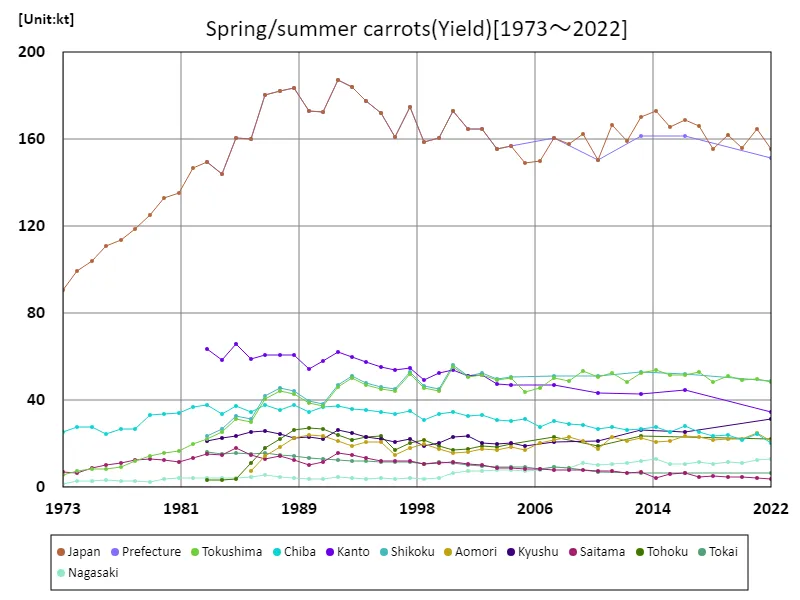

The maximum is 187kt[1992] of Japan, and the current value is about 83.2%
Spring and summer carrot harvest volume (by prefecture).
In Japanese agriculture, the yield of root vegetables, particularly in 2022, reveals distinctive trends and characteristics across prefectures. Tokushima Prefecture stands out with the highest yield recorded at 48.3kt, underscoring regional strengths in root vegetable production. This achievement reflects a combination of favorable climatic conditions, advanced agricultural practices, and possibly specialized farming techniques unique to the region. Overall, Japan’s agricultural landscape shows a pattern of localized excellence in crop yields, highlighting the diversity and efficiency of regional farming approaches in meeting both domestic demand and potentially international markets. As Japan continues to innovate in agriculture, leveraging these regional strengths will likely play a crucial role in sustaining and enhancing root vegetable production nationwide.
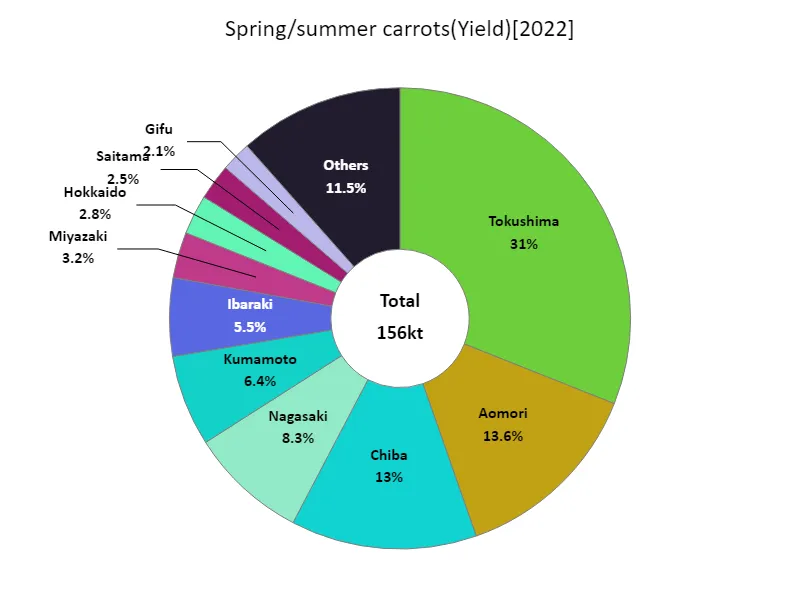

The maximum is 48.3kt of Tokushima, the average is 3.38kt, and the total is 156kt
Spring/summer carrot planting area (main data).
Over the span from 1973 to 2022, Japan’s planting area for spring and summer carrots has showcased distinct characteristics and trends. The peak nationwide planting area of 5.9 kha was reached in 1988, marking a significant era in carrot cultivation. Currently, Japan operates at 67.5% of this maximum, indicating shifts in agricultural practices influenced by factors such as technological advancements, economic conditions, and consumer preferences. Despite a slight decrease from its peak, the planting area remains substantial, reflecting ongoing efforts to optimize land use and efficiency in carrot production. As Japan navigates evolving agricultural landscapes, these historical trends provide valuable insights for sustainable farming practices and future growth in root vegetable cultivation.
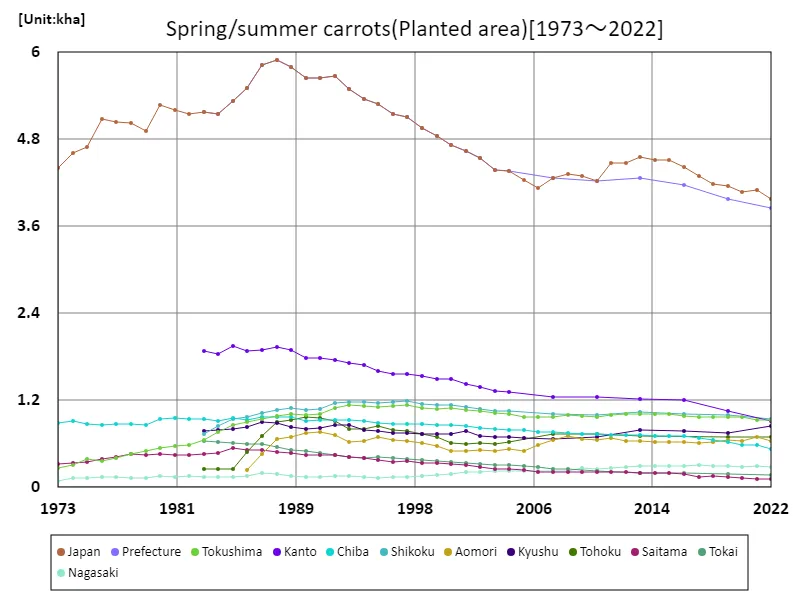

The maximum is 5.9kha[1988] of Japan, and the current value is about 67.5%
Spring/summer carrot cultivation area (by prefecture).
According to 2022 data on the area planted with root vegetables in Japan, Tokushima recorded the largest area overall at 926 hectares, the current maximum. This clearly makes Tokushima a particularly noteworthy region for root vegetable cultivation. In addition, the fact that the total cultivated area is the largest, including Tokushima, suggests that root vegetable cultivation is important nationwide. The reason why Tokushima has the largest cultivated area may be due to the local climatic conditions, soil, and advances in agricultural technology. Furthermore, it is possible that Tokushima’s agricultural areas may be suitable for cultivating root vegetables. These characteristics suggest that although root vegetable cultivation varies by region, there is demand overall, with Tokushima in particular being a notable production area.
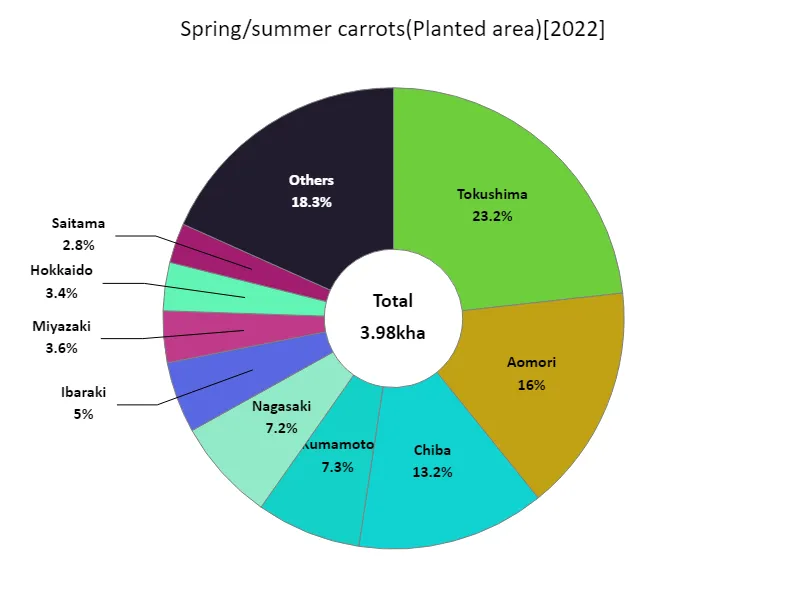

The maximum is 926ha of Tokushima, the average is 86.6ha, and the total is 3.98kha
Spring and summer carrot shipments.
In Japanese agriculture, the shipping volumes of spring and summer carrots provide insights into the dynamics of agricultural production and distribution. As of 2022, Tokushima Prefecture leads with a maximum shipping volume of 44.3kt, showcasing its prominence in carrot distribution. The nationwide average of 3.12kt per prefecture underscores consistent supply across regions, supporting both domestic consumption and potential export markets. With a total shipping volume reaching 143kt, Japan demonstrates robust capabilities in managing and transporting root vegetables efficiently. These trends reflect a balanced approach to meet market demands while leveraging regional strengths in agricultural productivity and distribution networks. As Japan continues to refine its agricultural strategies, maintaining high standards in shipping volumes remains crucial for sustaining market competitiveness and food security.
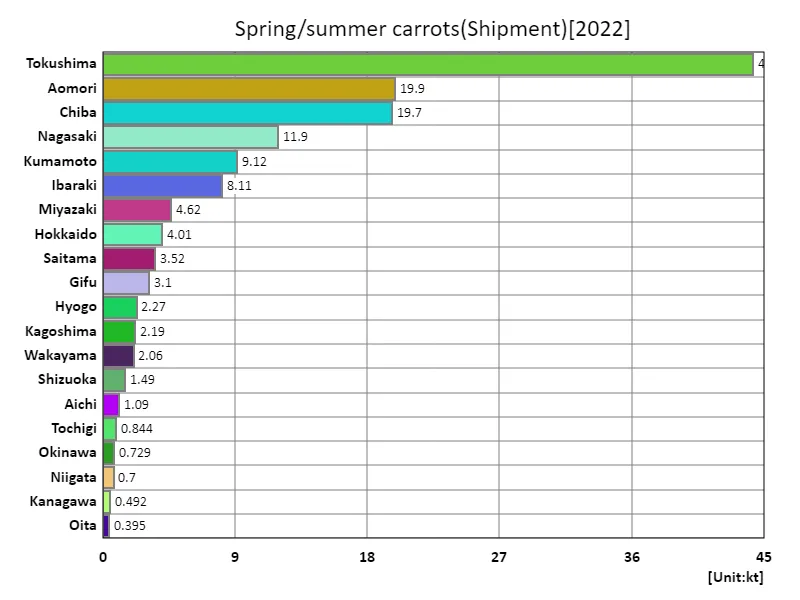

The maximum is 44.3kt of Tokushima, the average is 3.12kt, and the total is 143kt
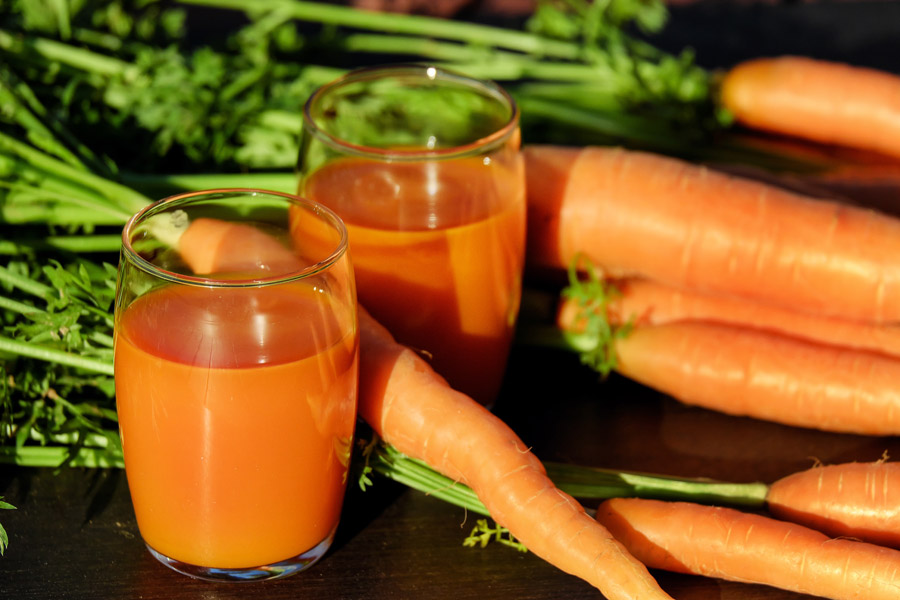


Comments